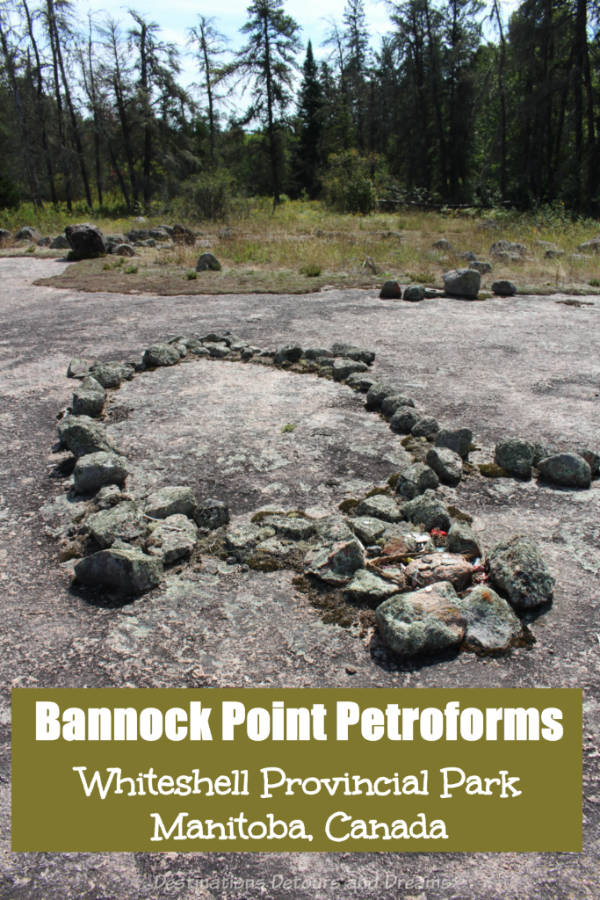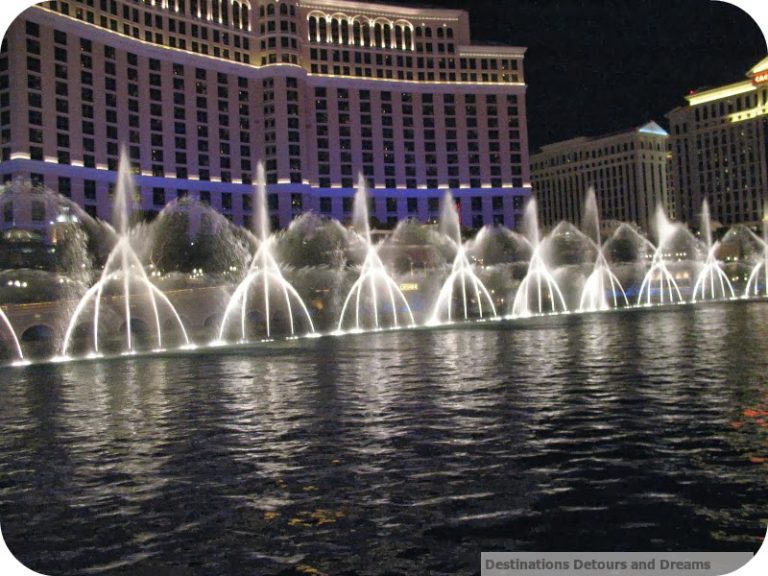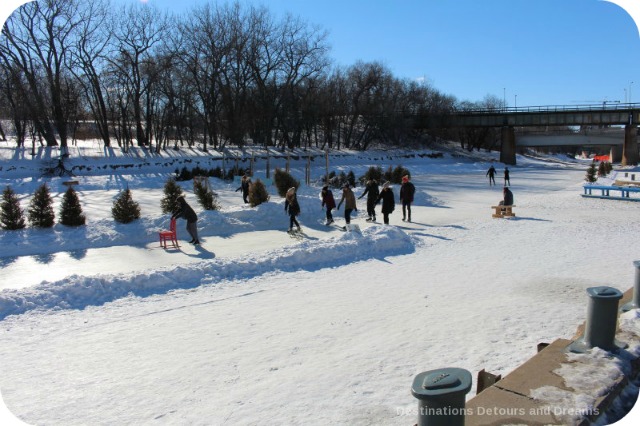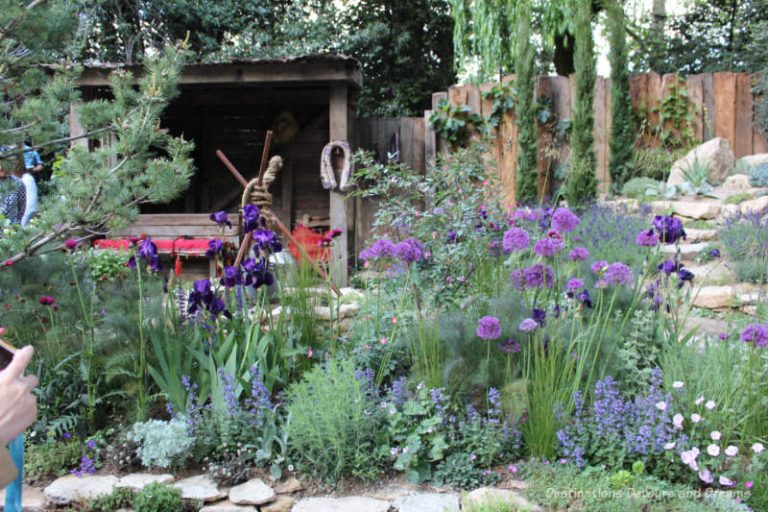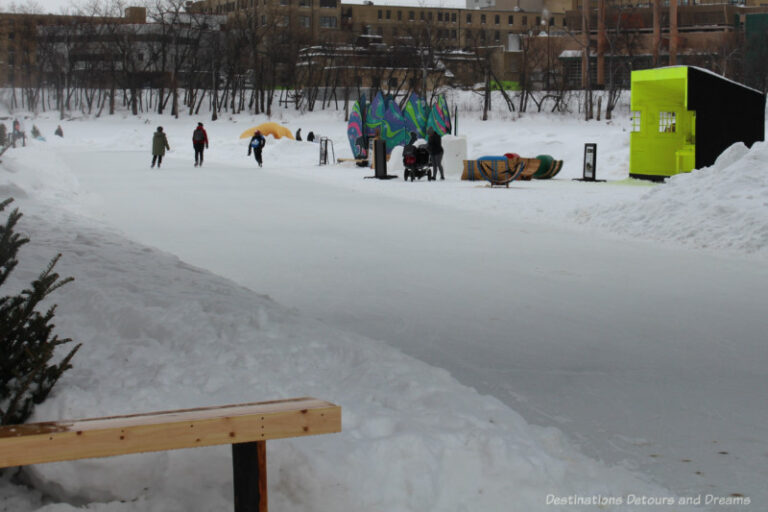Bannock Point: Petroforms In A Manitoba Provincial Park
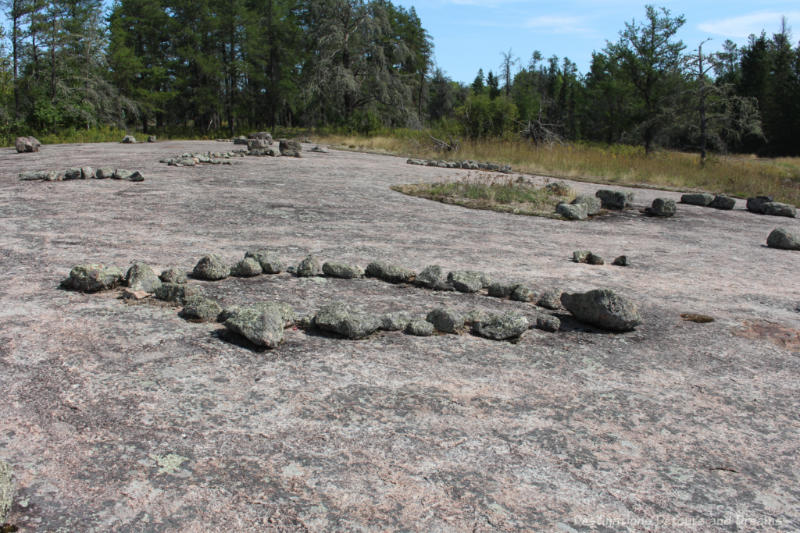
Prehistoric rock figures at Bannock Point Petroforms in Whiteshell Provincial Park, Manitoba, Canada
At the Bannock Point Petroform site in Manitoba’s Whiteshell Provincial Park, rocks are laid out in the forms of turtles, snakes, humans, and other abstract patterns. Petroforms are features formed by the placement (not piling) of stones to create the outline of figures or shapes. The exact cultural origins of the boulder figures at Bannock Point are unknown, but they are believed to be prehistoric. Anishinabe and other Indigenous peoples believe they were left long ago for the benefit of all people who visit the site to receive their teachings and healing.
Whiteshell Provincial Park is an almost 2,800 square kilometre (1,740 square mile) park in the southeast region of Manitoba along the Manitoba-Ontario border. Canadian Shield rock, pine and birch forests, rivers, a multitude of lakes and rivers, and sandy beaches make the park a popular all-season recreation area for hiking, canoeing, cross-country skiing, snowmobiling, fishing, picnicking, water activities, and just plain relaxing in nature. There are many private cottages in the park as well as resorts, rental cabins, and camping areas, both short-term and seasonal.
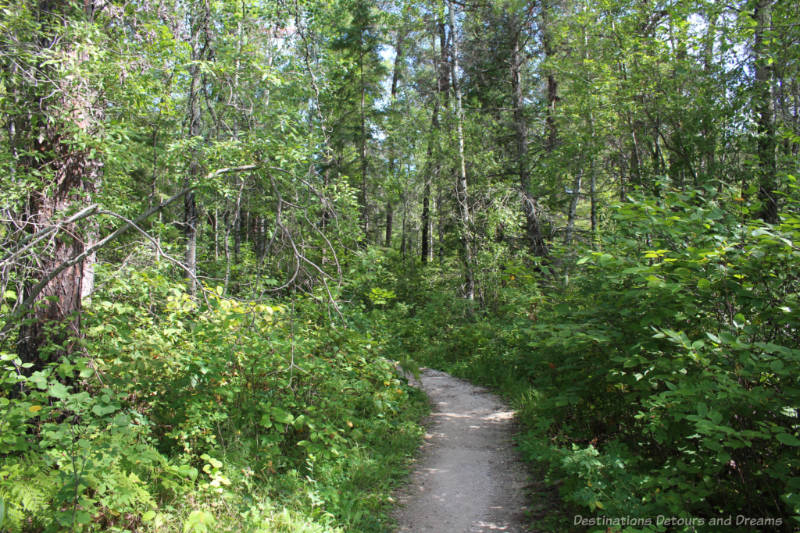
Bannock Point Petroforms are located along Provincial Road 307 between Betula Lake and Nutimik Lake just north of Pine Point Rapids. There is a parking area. A short path through the trees takes you to more open bedrock where you’ll find the petroforms.
The sign at the entrance to the path states that there are no fixed interpretations of the figures, that there are many levels of understanding and many ways to interpret the teachings.
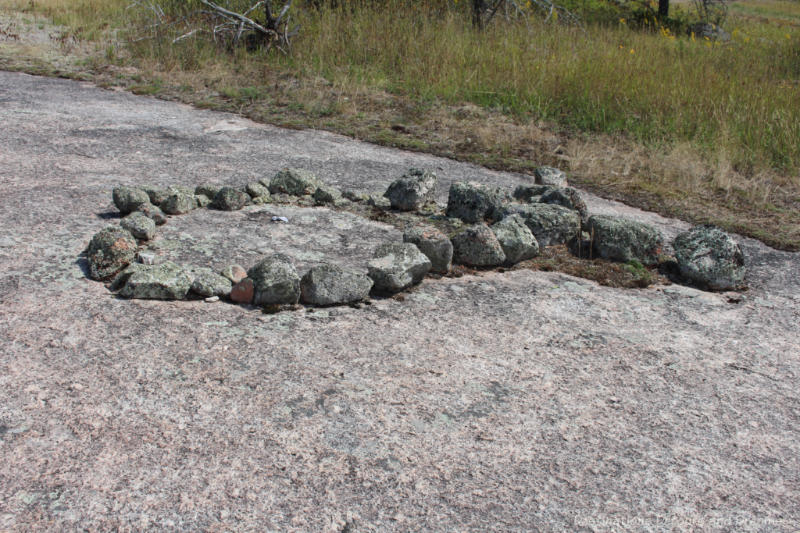
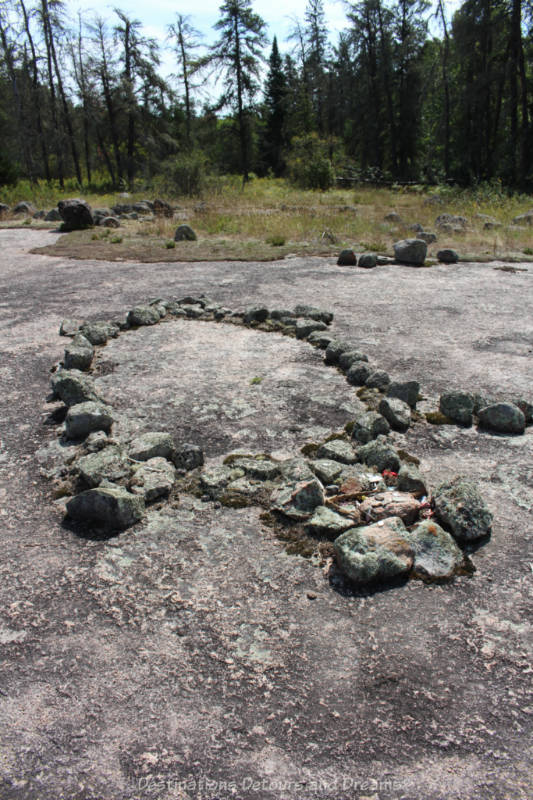
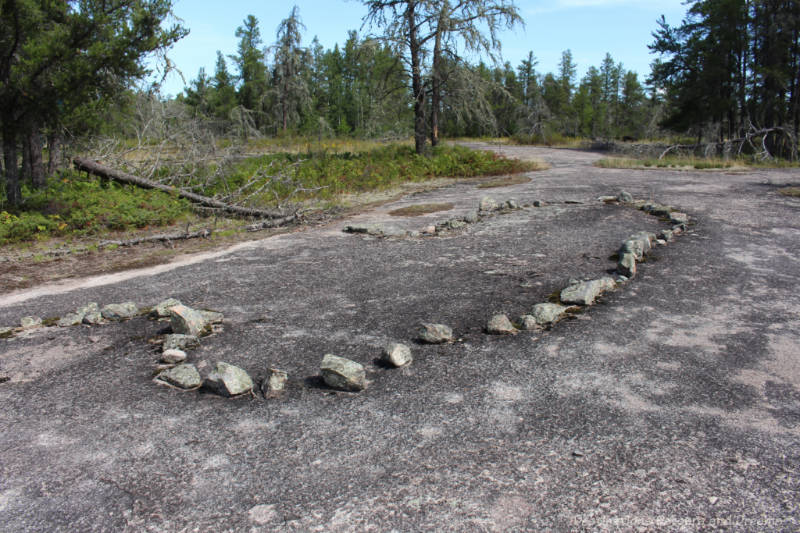
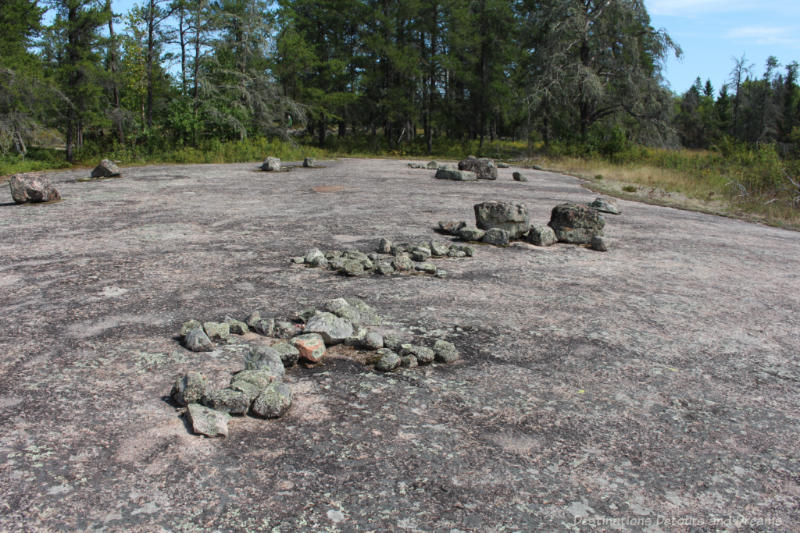
Rocks are not to be handled or disturbed, even if they do not appear to be part of any recognizable figure. Petroforms are very susceptible to destruction from natural agents, such as animals or weather, as well as people who may inadvertently carry stones away to build campfires or purposefully rearrange them. Under the Manitoba Heritage Resources Act of 1986, it is illegal to collect, move, or alter objects of archaeological or heritage significance without obtaining a permit.
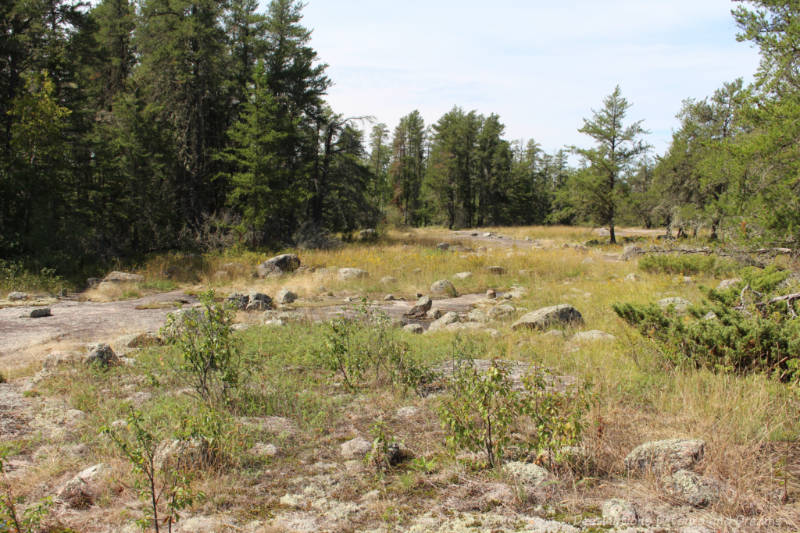
The sign at the entrance advises you to stay on open rock because there are no trail markers and it is easy to become disoriented if you venture into heavily wooded areas. I found that even wandering along the bedrock deeper into the petroforms could be slightly disorienting. It would be easy to get lost wandering into the woods.
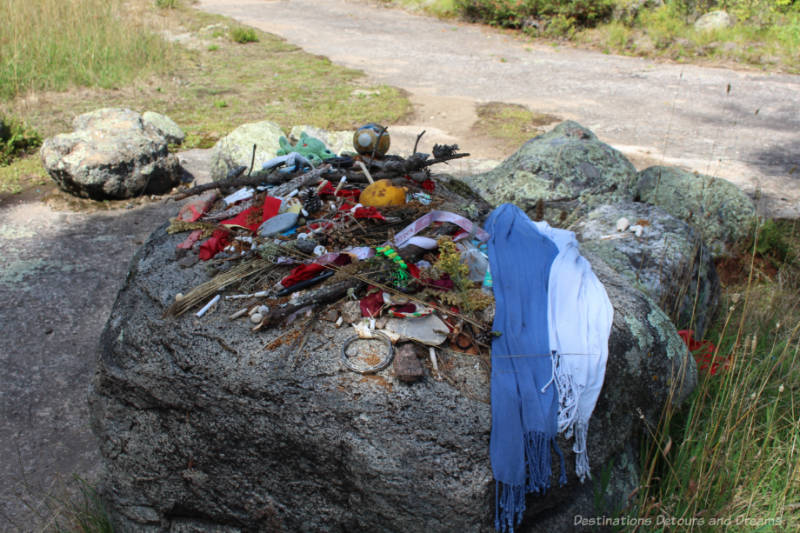
Ceremonial offerings such as cloth, tobacco, and coins have been left on a rock near the site entrance as a significant sign of thanks and respect. I also noticed bits of cloth hanging in some of the surrounding trees.
The petroforms trail is approximately 2 kilometres, but you can choose to walk less than that and still see a good collection of petroforms. Dogs on leashes are allowed. During the summer, free guided tours, approximately 1.5 hours in length, are available from Park Interpreters. More information about the petroforms as well as contact information for arranging tours is available here.
Never miss a story. Sign up for Destinations Detours and Dreams free monthly e-newsletter and receive behind-the-scenes information and sneak peeks ahead.
PIN IT
